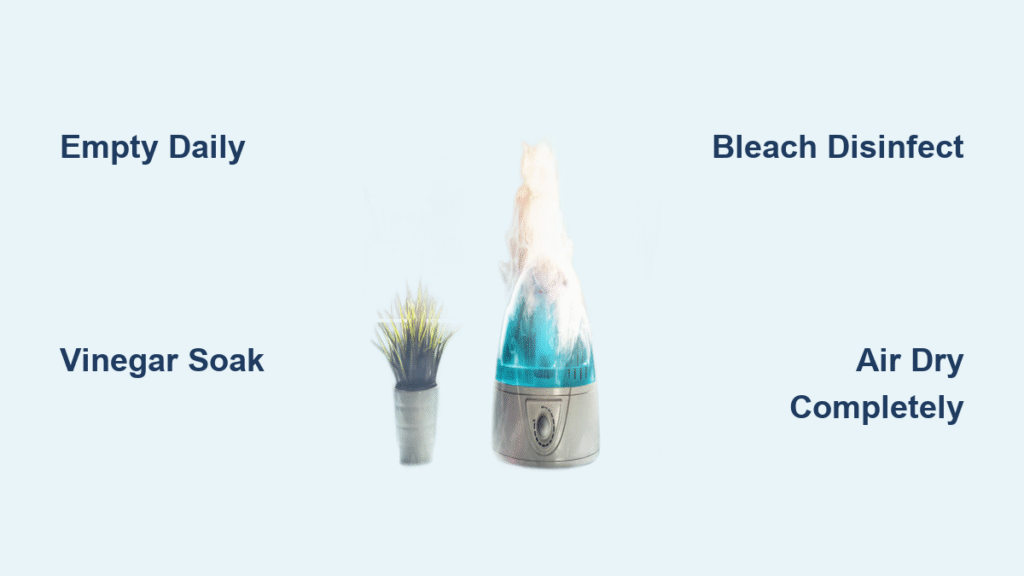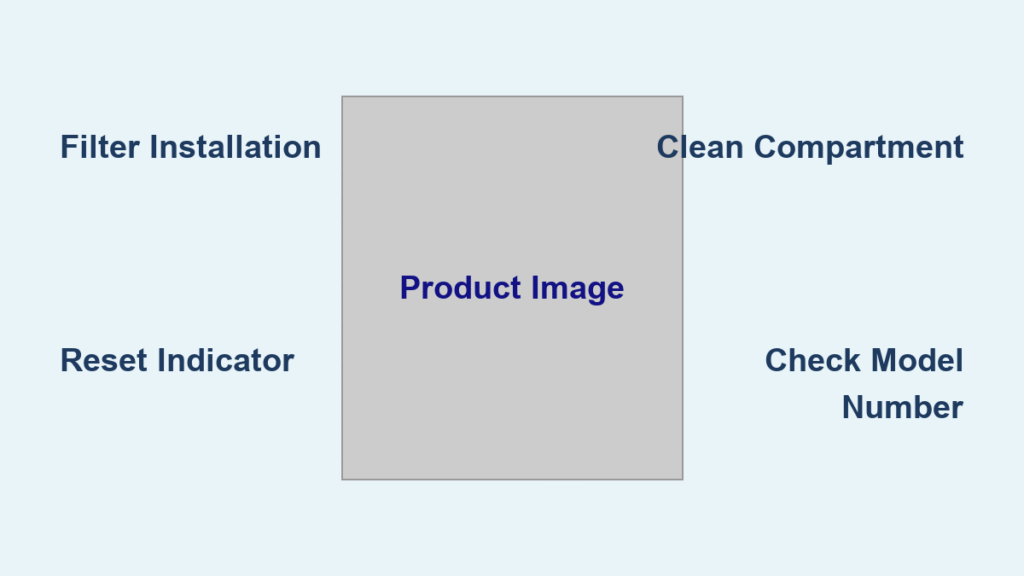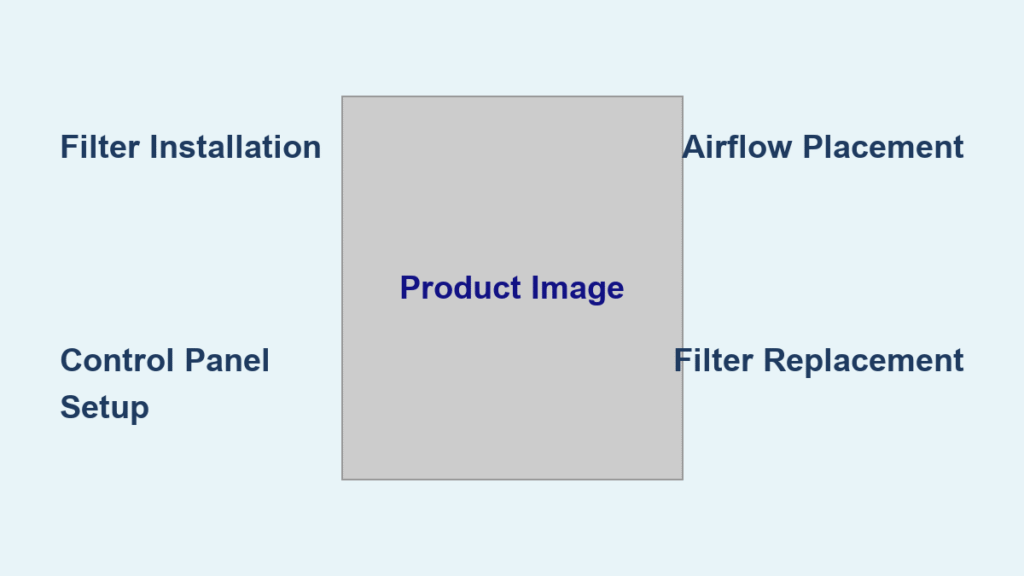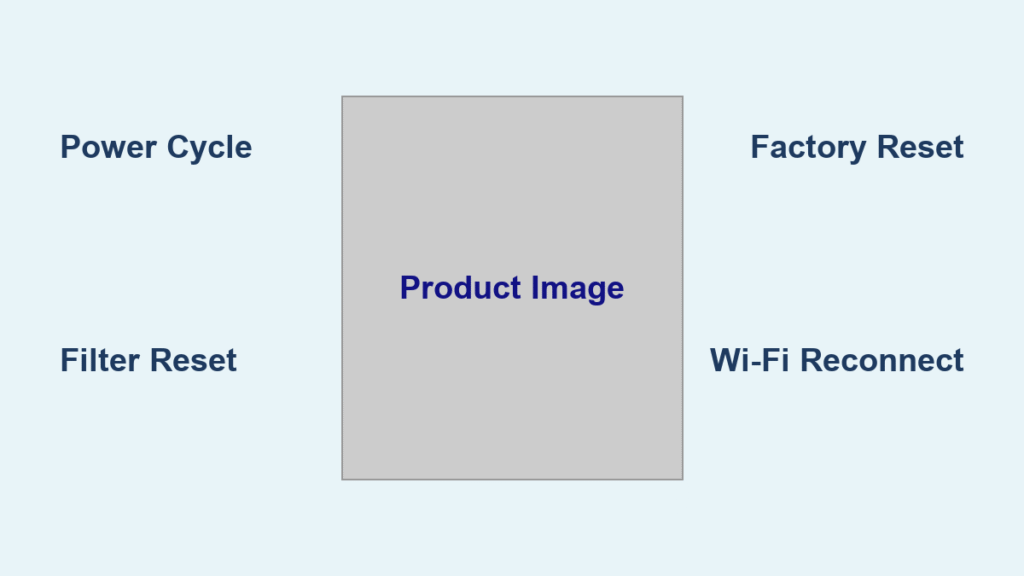That musty odor wafting from your humidifier isn’t just annoying—it’s a red flag for dangerous microbial growth. When water sits stagnant in your unit for 48-72 hours, it transforms into a breeding ground for mold, bacteria, and slimy biofilms that get blasted into your breathing space as invisible mist. For families with asthma or allergies, this “comfort device” could actually be triggering respiratory issues without you realizing why. The good news? Proper disinfection completely eliminates these health hazards while restoring your humidifier’s performance. This guide delivers the exact medical-grade sanitization process used by professionals—using safe, household ingredients—to keep your air clean and your family healthy.
Why Your Humidifier Becomes a Health Hazard
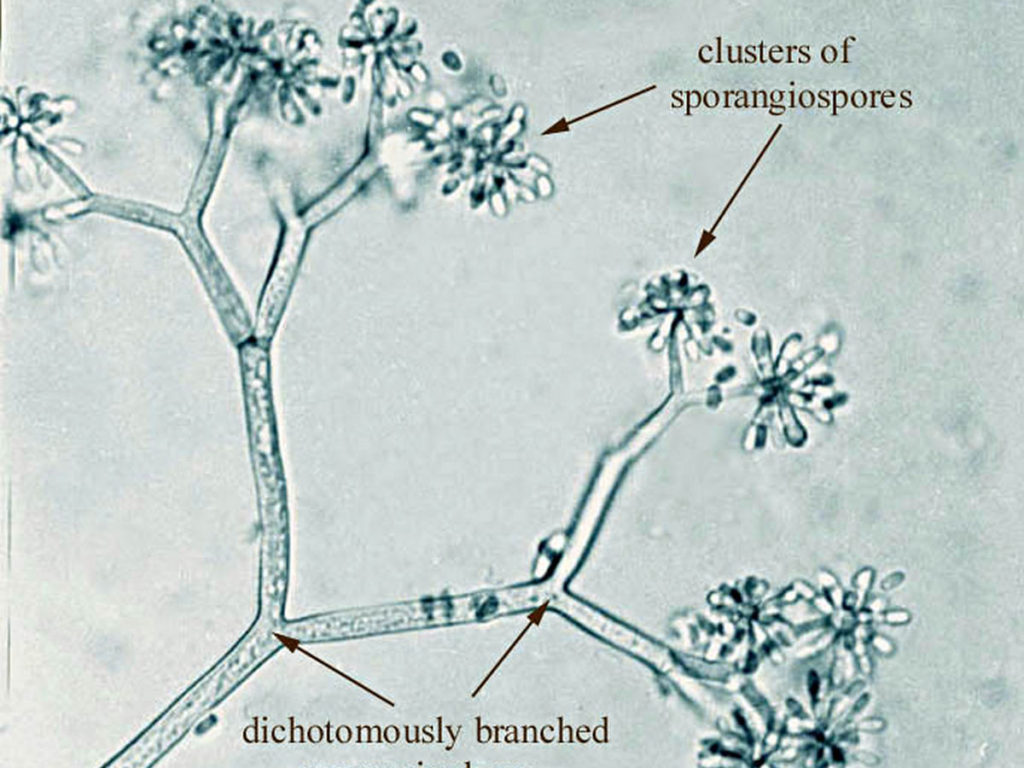
Your humidifier creates the perfect storm for microbial explosions: constant moisture, warmth, and organic particles from tap water. Within days, bacteria multiply exponentially, forming protective biofilms that resist basic cleaning. These contaminants don’t just linger—they aerosolize with every mist cycle, sending mold spores and bacteria deep into your lungs. Critical danger signs you can’t ignore: slimy residue inside the tank, sour odors during operation, visible mold spots (especially pink or black), and mysteriously reduced mist output despite a full water level. Ignoring these means you’re essentially running a pathogen diffuser in your bedroom.
Daily Prevention Habits That Stop 90% of Problems
Emptying your humidifier after each use is the single most effective defense against contamination. Never let water sit overnight—even if you plan to reuse it tomorrow. Stagnant water becomes hazardous within 48 hours, so this 30-second habit prevents 9 out of 10 deep-cleaning emergencies.
The 2-Minute Daily Rinse Routine
This non-negotiable sequence takes less time than brewing coffee:
– Immediately dump remaining water after turning off the unit
– Rinse tank and base thoroughly with warm tap water
– Invert all components on a dish rack to air-dry completely
– Always refill with distilled water to minimize mineral buildup
Pro tip: Keep a dedicated gallon of distilled water beside your humidifier. That $1 investment prevents hours of scrubbing later and stops white dust residue on furniture.
Weekly Disinfection: Your Essential Sanitizing Protocol
Safety Setup Before You Start
Never skip these critical prep steps:
– Unplug the unit completely and move it to your kitchen sink
– Disassemble according to your manual—never force stuck parts
– Discard any filter older than 3-6 months (replace, don’t bleach)
– Work in a well-ventilated area when using chemical solutions
Conquering Mineral Scale Buildup

Mineral deposits harbor bacteria and reduce mist output. Choose your descaling method based on severity:
– White vinegar (undiluted): Soak for 20 minutes for light scale; leave overnight for stubborn crust
– Citric acid solution: Mix 2 tablespoons per half-gallon water for less odor
– Commercial descalers: Use only if labeled humidifier-safe
Focus scrubbing on high-risk zones:
– Ultrasonic models: Nebulizer disc (that small metal transducer)
– Warm-mist units: Heating element coils
– All models: Water tray crevices and nozzle interiors
Rinse thoroughly until water runs clear, then air-dry completely before disinfecting.
Killing Mold and Bacteria for Good
Vinegar alone won’t eliminate all pathogens—here’s how to achieve true sanitization:
Bleach solution method (most effective):
1. Mix 1 teaspoon unscented bleach per gallon of water
2. Fill tank ¾ full and let solution drain into base
3. Soak all parts 15-20 minutes (never exceed 30 minutes)
4. Scrub interior with soft brush—focus on slimy areas
5. Empty carefully outdoors to avoid splashing electronics
6. Rinse with 2-3 full tank refills until bleach odor vanishes
7. Air-dry completely on microfiber towels
Hydrogen peroxide alternative: Use 3% solution undiluted with identical timing. Critical warning: Never mix vinegar and bleach—this creates toxic chlorine gas.
Monthly Deep-Clean for Stubborn Contamination
When odors persist after standard cleaning, escalate to this professional protocol:
1. Submerge all non-electronic plastic parts in fresh bleach solution for 30 minutes
2. Reassemble unit and fill tank with solution
3. Carry outside and run for 5-10 minutes to flush internal channels
4. Empty, then rinse with plain water for 5 full minutes
5. Air-dry all components for 48+ hours before reuse
Pro tip: If musty smells linger, repeat the bleach soak with a fresh solution—old biofilms may require multiple treatments.
Model-Specific Cleaning Tactics

Ultrasonic & Cool-Mist Units
Target the nebulizer disc with surgical precision: Dip cotton swabs in vinegar to clean around the metal transducer. Remove and soak the mist nozzle/chimney separately—mineral buildup here causes white dust on furniture.
Warm-Mist Humidifiers
Submerge only the heating element portion in vinegar overnight. After disinfecting, gently lift the heating element cover to ensure bleach residue washes from hidden crevices—this prevents chemical odors during operation.
Evaporative Models
Never bleach wick filters—it destroys their antimicrobial coating. Rinse filters under cold water weekly and replace every 3-6 months when stiff or discolored. Clean the fan assembly with a dry microfiber cloth to avoid moisture damage.
Storage Protocol for Off-Season Safety
Preparing for storage prevents next-season contamination:
1. Complete full disinfection and descaling
2. Dry every component for 48+ hours on clean towels
3. Store disassembled in a breathable container (never sealed plastic)
4. Add silica gel packets to absorb ambient moisture
Critical mistake to avoid: Storing with even slight dampness guarantees mold growth inside closed containers.
Frequency Guidelines by Household Need
| Household Type | Rinse Daily | Disinfect Weekly | Deep Clean Monthly |
|---|---|---|---|
| Standard use | ✓ | ✓ | ✓ |
| Asthma/allergies | ✓ | 2× weekly | Bi-weekly |
| Baby’s nursery | ✓ | ✓ | ✓ |
| Occasional use | ✓ | Before/after use | ✓ |
Troubleshooting Persistent Problems
White dust on surfaces? Switch to distilled water immediately and clean the nebulizer disc with vinegar—mineral residue indicates hard water damage.
Reduced mist output? Heavy mineral scale blocks vapor production. Soak the heating element or nebulizer disc in vinegar for 2 hours, then scrub gently.
Slimy tank walls after cleaning? Biofilm requires bleach disinfection—escalate from vinegar-only methods and check hidden crevices with a flashlight.
Chemical smell after rinsing? Run one full tank of plain water outdoors to flush residual disinfectant from internal channels.
Essential Supply Checklist
- Gallon jug of distilled white vinegar
- Unscented liquid bleach or 3% hydrogen peroxide
- Soft bottle brush and old toothbrush
- Cotton swabs for precision cleaning
- Microfiber cloths (lint-free)
- Your owner’s manual (for model-specific disassembly)
Non-Negotiable Safety Rules
Never submerge motor bases or electronic components—moisture causes irreparable damage. Avoid steel wool or abrasive pads that scratch plastic surfaces, creating microbe-friendly grooves. Verify dishwasher safety before machine washing; most tanks are top-rack safe but bases never are. Smart model owners: Enable app reminders on DREO or Levoit units to track cleaning cycles—set them the moment you finish this disinfection.
Your humidifier should now produce pure, healthy moisture with zero chemical odors. Before regular use, run it for 10 minutes with plain water to ensure complete rinsing. By following this medical-grade protocol, you’ve transformed your device from a potential health hazard into a true wellness ally—delivering only clean, therapeutic moisture to your home.

